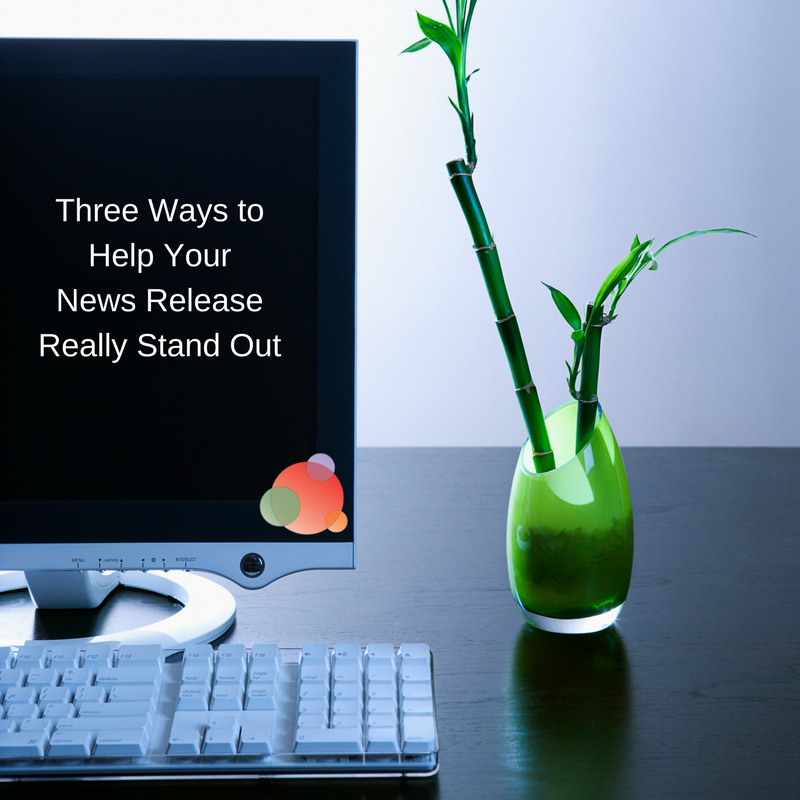 In the PR Dream Team, we had a conversation about newswires and their role in today’s communications activities.
In the PR Dream Team, we had a conversation about newswires and their role in today’s communications activities.
To help the community member, we discussed the goals of the organization, why the CEO thought it important to distribute news that way, and other tactics that might be more effective.
It then evolved to whether or not it’s a good strategy to write and send news releases multiple times a month.
This is what drives me crazy about public relations.
First, what we do is not just media relations—it’s one (small—tiny—itty bitty) part.
Second of all, there is such a thing as too much of a good thing.
NO ONE cares about your internal promotions, latest awards won, or some one-off announcement you have.
It makes having a media relations only program extremely difficult.
You can only have so many “hits” at once.
The strategic stories that show a real return-on-investment are few and far between.
You have to have an integrated program that fills in the gaps between the true news.
Your News Release is Not News
Later this week (Thursday, I believe), Colleen Martell has an article running here on the very topic.
Without giving away too much, what I love is when she talks about what makes a trend.
She says:
One company with a new technology isn’t news; two companies with the technology is a coincidence; three companies represent a trend.
Your organization distributing a news release about your latest and greatest does not news make.
It doesn’t even make a trend.
In fact, today your news release is a tiny part of any successful PR effort.
I always say media relations is the backbone of what we do, but it does not work alone.
To see your campaign and activities really take flight you need to invest in creating engaging, shareable content.
Start by Providing Value
The best way to stand out from the hundreds of other news releases journalists scan through each day is to provide something of value.
This can take the form of starting with a proprietary survey on a timely topic, having a thoughtful perspective on an issue in the news, or providing free educational (not promotional) content of interest to the journalist’s audience.
Many brands equate proprietary surveys with $100,000 spends and a multi-month process with a market research company.
And, while that certainly is an option for brands with large budgets that are looking to create a statistically valid piece of research, any brand with a decent-sized email list and a free survey account can obtain valuable—and eminently shareable—insights that merit publication.
Similarly, newsjacking can be an excellent way to gain attention for your PR efforts, when done well.
And by done well, I’m talking about a security firm sharing tips on securing your household IoT devices so they don’t contribute to the next distributed denial of service (DDoS) attack.
Not “Three personal branding lessons you can learn from today’s dead celebrity.”
Supplement Your Campaign With Visual Assets
No matter how compelling your written content is, however, if no one stops to read it, you’re out of luck.
That’s why creating color visuals—photographs, infographics, SlideShares, videos—is so important.
Research from Xerox on the effectiveness of using color in business documents found color increases readers’ attention spans and recall by 82 percent, and increases readership by 80 percent.
A few ways to easily and inexpensively add visuals to your PR campaigns include:
- Filming 15-30 sec smartphone video snippets with executives or customers quoted in your text materials.
- Designing social-friendly quote cards with visuals by using Canva or similar tools.
- Creating visual representations of your data by using Venngage or Piktochart.
And the best part is all of these pieces can have your logo on them.
They also can include calls-to-action that lead visitors back to your website.
At this point, their return-on-investment becomes trackable.
And that return is all thanks to you, and your PR efforts.
Have a Comprehensive Distribution Plan
If your distribution plan is posting the news release on social media and distributing it through a release service, you’re missing out on significant opportunities.
When planning your program, and deciding who to work with to create your content, you’ll want to keep distribution in mind.
- Is there an industry thought leader who would be willing to weigh in?
- Are there influencers who don’t mind sharing a link or can provide extra insight or advice?
- Are some of your customers more active on social media than others?
- Do you have journalists who are willing to share your news? They may not want to write about it, but they may share it.
When you create content that includes contributions from people who have a built-in audience, they’re very likely to share it with their networks, as long as it’s not a promotional puff piece.
You spend countless hours on crafting the right PR program to meet organizational objectives.
But augmenting your traditional tactics with creating compelling content can take your programs so much further, and help you show that PR is a vital part of your business.
It’s not just a nice-to-have luxury.
We have a real opportunity to keep our organizations top-of-mind without sending countless “who cares?” news releases.
Consider additional opportunities the next time you begin to write CITY, STATE (DATE) — XXX is excited to announce.
A version of this first appeared on the PRSA blog